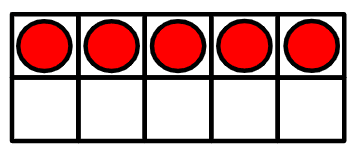Double numbers and explain what doubling means
I can double numbers and explain what doubling means.
Double numbers and explain what doubling means
I can double numbers and explain what doubling means.
These resources will be removed by end of Summer Term 2025.
Lesson details
Key learning points
- When both addends are equal, we are doubling.
- Doubling means adding two equal addends.
- Doubling a whole number always gives an even number.
Keywords
Double / doubling - To become twice as many.
Addends - Any of the numbers that are added together.
Equal - Exactly the same amount or value.
Common misconception
Children may struggle to see that a double is two of the same thing.
Spend time exploring doubles that can be found in the children's immediate environment e.g. using their hands or playing a game of dominoes.
To help you plan your year 1 maths lesson on: Double numbers and explain what doubling means, download all teaching resources for free and adapt to suit your pupils' needs...
To help you plan your year 1 maths lesson on: Double numbers and explain what doubling means, download all teaching resources for free and adapt to suit your pupils' needs.
The starter quiz will activate and check your pupils' prior knowledge, with versions available both with and without answers in PDF format.
We use learning cycles to break down learning into key concepts or ideas linked to the learning outcome. Each learning cycle features explanations with checks for understanding and practice tasks with feedback. All of this is found in our slide decks, ready for you to download and edit. The practice tasks are also available as printable worksheets and some lessons have additional materials with extra material you might need for teaching the lesson.
The assessment exit quiz will test your pupils' understanding of the key learning points.
Our video is a tool for planning, showing how other teachers might teach the lesson, offering helpful tips, modelled explanations and inspiration for your own delivery in the classroom. Plus, you can set it as homework or revision for pupils and keep their learning on track by sharing an online pupil version of this lesson.
Explore more key stage 1 maths lessons from the Addition and subtraction facts within 10 unit, dive into the full secondary maths curriculum, or learn more about lesson planning.

Licence
Starter quiz
6 Questions




0
0
8
8

Exit quiz
6 Questions









